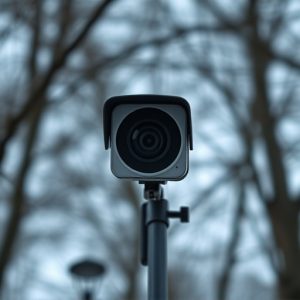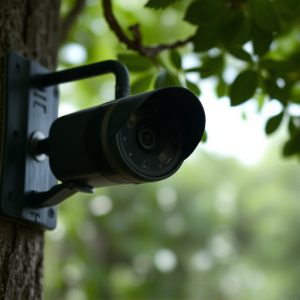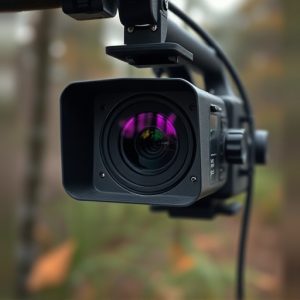Unveiling Hidden Cameras: A Comprehensive RF Detection Guide
Hidden cameras rely on radio frequency (RF) technology for secret data transmission, making them und…….
Hidden cameras rely on radio frequency (RF) technology for secret data transmission, making them undetectable by conventional means. RF converts electrical energy into radio waves carrying information over distances. Unusual RF signals can reveal the presence of covert surveillance, as unlicensed devices operate within specific bands. Signs of covert surveillance include unusual markings, gaps in walls/ceilings, unexplained devices, and EMI glitches in electronic devices. Detecting these cameras involves scanning specific RF frequency ranges and analyzing electrical signal abnormalities using specialized equipment. Combining visual inspections with RF technology ensures comprehensive privacy and security against modern surveillance tactics.
Uncover the hidden eye with our comprehensive guide to detecting radio frequency (RF) signals in covert surveillance cameras. Understanding how these devices operate is crucial to identifying signs of covert surveillance. We’ll walk you through potential RF sources, practical detection methods using everyday tools, and advanced techniques for professionals. Learn to recognize the subtle clues—the invisible threads weaving a tapestry of hidden observation—and stay vigilant against lurking eyes.
- Understanding Radio Frequency (RF) Technology in Hidden Cameras
- Identifying Potential Sources of Covert Surveillance
- Practical Methods for Detecting RF Signals
- Advanced Tools and Techniques for Uncovering Hidden Cameras
Understanding Radio Frequency (RF) Technology in Hidden Cameras
Hidden cameras utilize radio frequency (RF) technology to transmit video and audio signals, making them hard to detect with conventional methods. Understanding RF is crucial in identifying these covert surveillance devices. RF works by converting electrical energy into radio waves, which carry information over distances. In hidden cameras, this technology allows for wireless transmission of data from the camera’s sensor to a receiver, often disguised as ordinary objects like light bulbs or power outlets.
By analyzing unusual RF signals, one can uncover signs of covert surveillance. Unlicensed RF devices, such as those used in hidden cameras, operate within specific frequency bands. Specialized equipment can detect these signals, even when they are attempts at being hidden or jammed. Additionally, patterns in signal strength and interference from other devices can provide clues to the presence of hidden cameras.
Identifying Potential Sources of Covert Surveillance
Identifying potential sources of covert surveillance is a crucial step in ensuring your privacy and security. While hidden cameras can be incredibly sophisticated, there are several signs that may indicate their presence. These include unusual markings or gaps on walls, ceilings, or furniture, as well as any devices or attachments that don’t seem to serve a clear purpose. It’s also worth paying attention to power outlets or cables that appear inexplicably bundled or hidden.
Additional red flags can be found in the form of electromagnetic interference (EMI) from radio frequency (RF) signals. Devices like hidden cameras often transmit data using RF technology, which can disrupt or interfere with nearby electronics. If you experience frequent glitches, static, or dropouts in your electronic devices, especially in areas where privacy is a concern, it could be a sign of covert surveillance.
Practical Methods for Detecting RF Signals
Detecting hidden cameras using radio frequency (RF) signals is a practical method that can help uncover covert surveillance devices. One of the primary ways to identify RF emissions from hidden cameras is through dedicated detection equipment. These tools can scan a specific frequency range, often used by hidden cameras, and alert users when a signal is picked up. This method is especially useful in high-risk scenarios where professional security audits are required.
Additionally, practical techniques include analyzing unusual electrical signals or electromagnetic interference (EMI) that might indicate the presence of a hidden camera. Experts look for signs like sudden changes in power consumption, erratic behavior from electronic devices, or EMI patterns not typically associated with known sources. By combining these approaches, individuals can effectively detect and mitigate the risks posed by covert surveillance cameras, ensuring greater privacy and security.
Advanced Tools and Techniques for Uncovering Hidden Cameras
In today’s digital age, detecting hidden cameras has evolved into an intricate art, requiring advanced tools and techniques to uncover covert surveillance devices. Beyond visual inspections, professionals leverage radio frequency (RF) technology to sniff out these hidden observers. RF detectors emit signals that can identify electronic devices broadcasting on specific frequencies, making them invaluable in searching for hidden cameras that might be transmitting data wirelessly.
This method is particularly effective when combined with a keen eye for subtle signs of covert surveillance. Such indicators include unusual electrical wiring, unexplained outlets or cables, and odd markings or protrusions behind walls or furniture. By integrating these visual clues with RF scanning, individuals can navigate through homes, offices, or public spaces with greater confidence, ensuring privacy and security by identifying and neutralizing hidden cameras before they capture sensitive information.
Detecting hidden cameras has become an essential skill in today’s digital age, where privacy breaches can have severe consequences. By understanding radio frequency (RF) technology and its application in covert surveillance, individuals can empower themselves to identify potential signs of hidden cameras. The article has outlined practical methods and advanced tools that aid in uncovering these devices, enabling users to protect their personal and professional spaces from unauthorized observation. With the right knowledge and resources, navigating the landscape of hidden camera detection becomes a feasible task, ensuring peace of mind and a safer digital environment.


